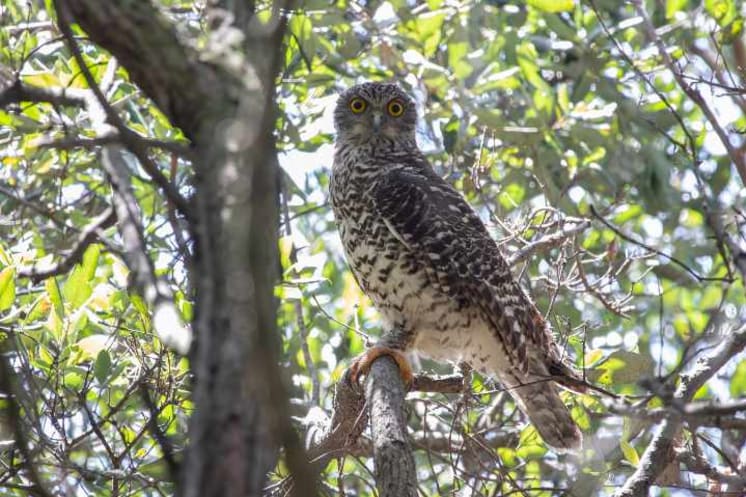From time to time at Stanwell Park we are woken up by the screech of a train, a police or ambulance siren, mufferless motorbikes and someone doing wheelies in the parking areas. But it is not often you are woken at 3am by a powerful owl less than 50 metres from your bedroom window. I had heard powerful owls before in the middle of the night, but they seemed to be further away and closer to the escarpment. This one nearly threw me out of bed.
I contacted Ewan Auld, a dedicated local birdwatcher and told him about my interrupted sleep. He went for a walk on the track from Stanwell Avenue to the kiosk where the Art in the Park nests are. There, above him in one of the taller Turpentine trees, was a roosting powerful owl.
They are the apex predators and travel widely in search of their food, mainly ring-tail possums and sugar gliders. Not far away was a frogmouth, often mistaken for an owl, who was there for the same gastronomical reasons, although they usually dine on insects, frogs and smaller vertebrates.

Powerful owls are listed as endangered in Victoria but classified as “vulnerable” in New South Wales. The reasons are the same, the loss of habitat not only for the large tree hollows that they require for nesting, but for their food sources. They usually avoid built-up areas and forest monocultures because their marsupial meals require plant biodiversity for their own food.
This powerful owl was prepared to cross over the built-up area of the Stanwell Park village to roost in the Stanwell Avenue Reserve on the middle headland of the beach. There can be only one reason for that, the rich food source now created by the successful regeneration of the littoral rainforest cut down in the 1920s by real estate developer Henry Halloran. In 1968, most of the land was resumed for a park and the rainforest allowed to regenerate with the help of Wollongong City Council and its volunteers.
There are 40 native species of tree that have regenerated naturally in the reserve and another 40 of mainly Illawarra trees have been planted there over the past 50 years to replace the invading weeds, Lantana, Ochna, Senna and Asparagus fern. Residents have also planted native species in their gardens, boosting food sources for birds and marsupials, which then bring in the owls.
Ewan tells me that Stanwell Park is particularly rich in bird life. He and his father Tony have identified some 200 bird species within the village and its surrounds, and it is not uncommon for him to see 40-60 species in a 2-3 hour walk around the village. Not all of these birds are permanent residents as some are migrating.
Being woken up in the middle of the night by human-induced noise can be annoying, but there is something serene about the call of a powerful owl, perhaps a sign that good things are happening somewhere in the world.






